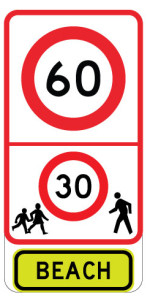Too much speed is one of the biggest killers on our roads. People die every year in Aotearoa in speed-related crashes.
Remember, the faster you go, the more likely you are to be killed or seriously injured if you crash.
You can drive at any speed under or equal to the limit, provided:
Important!Speed limit changes take effect at the sign post. Before reaching the speed limit sign, make sure you:
|
If you’re travelling slower than the speed limit and there are vehicles following you, you must:
Don’t speed up on straight stretches of road to prevent vehicles from passing you.
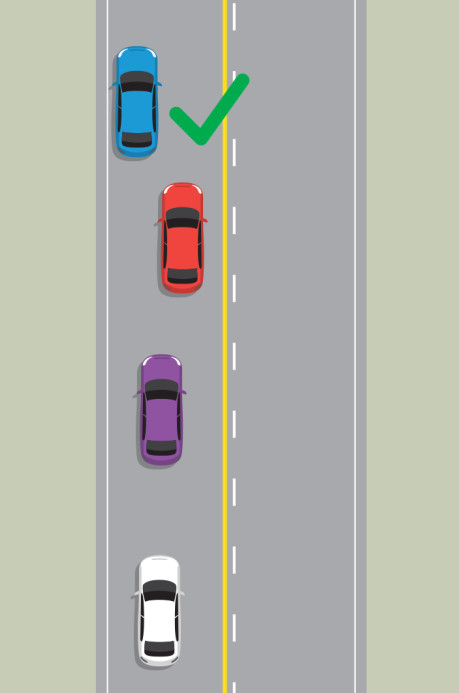
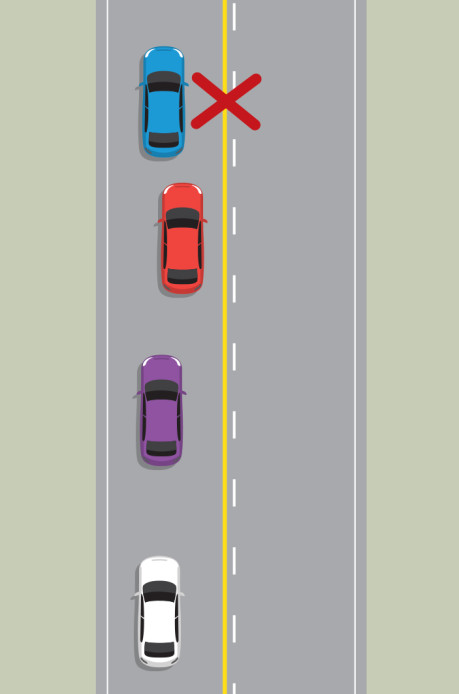
A speed limit is the maximum legal speed you can travel on the road in good conditions. Signs showing the speed limit are displayed beside the road. These signs usually have a red border, which means the sign is compulsory.
You may drive slower than the speed limit shown, but you must be considerate towards any vehicles behind you.
You must drive slower than the limit if:
Some examples of speed signs.
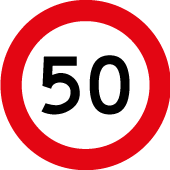
The maximum speed you
can travel is 50km/h
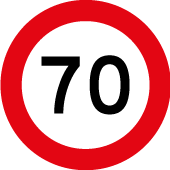
The maximum speed you
can travel is 70km/h
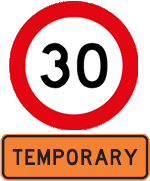
A temporary speed limit
of 30 km/h applies
Temporary speed-limit signs are usually put up when there’s work being done on or near the road.
These signs mean the maximum speed that you can travel at is 100km/h.
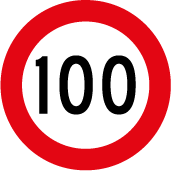
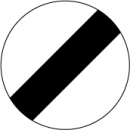
When following other vehicles, remember that some vehicles have lower speed limits and you may have to adjust your speed.
The vehicles listed in the table below have a lower maximum speed limit than light vehicles.
| Vehicle type | Maximum open road speed limit |
| Heavy vehicles – vehicles with a gross vehicle mass of over 3500kg, and heavy motor vehicles towing trailers | 90km/h |
| Light vehicles towing trailers | 90km/h |
| School buses with a gross vehicle mass over 2000kg | 80km/h |
| Any vehicle using a tow rope or other non-rigid connection to tow another vehicle, other than a motorcycle or ATV | 50km/h |
| Heavy vehicles constructed without springs, or other forms of suspension, between its road wheels and its chassis | 45km/h |
| Any vehicle towing a mechanically disabled motorcycle or ATV | 30km/h |
Active school speed limit signs are turned on before and after school, and at other times there’s activity associated with the school.
The sign on the left indicates the start of the school speed limit. If either 30 or 40 km/h is visible the red ring will flash, indicating the maximum speed past the school until the school speed limit ends.
The sign on the right will be on the side road.
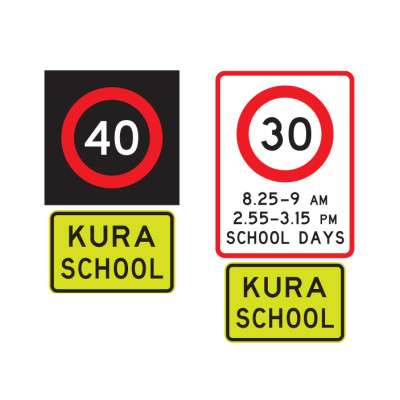
These signs mean that you’re coming up to a crash, breakdown, fire or other emergency. Slow down and drive at 20km/h or less until you’ve passed the emergency site.





Important!If a driver exceeds a permanent posted speed limit by more than 40km/h, there's an automatic 28-day licence suspension. If a driver exceeds a temporary speed limit by more than 50km/h, there's an automatic 28-day licence suspension. |
These signs are displayed on school buses. If a school bus has stopped, you must slow down and drive at 20km/h or less. This applies if:
No matter which way you’re coming from, you must drive under 20km/h until you’re well past the bus.

These signs warn you that you’re coming up to a tight curve or bend in the road. The number recommends a safe and comfortable speed to drive around the curve – in this example the recommended speed in good driving conditions is 35km/h. The arrows show which direction the curve goes.
![]()
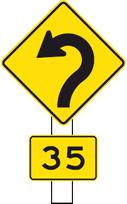
Variable speed signs are used to manage traffic congestion and you need to adjust your speed to the speed shown.
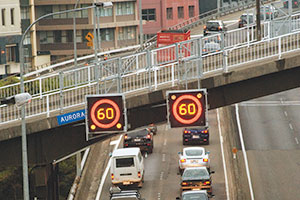
These speed limit signs can be used at beaches or rivers. If pedestrians are present, the speed limit is 30km/h. If there are no pedestrians, the speed limit is 60km/h.
